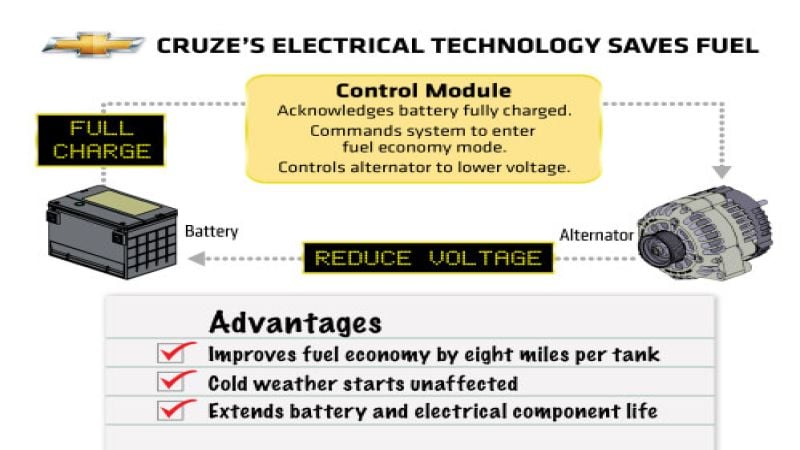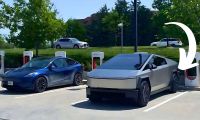RVC is one of several small steps in a long journey toward better overall fuel savings for GM and Chevrolet.
Furthermore, the technology extends battery and electrical component life.
Officially, the technology called Regulated Voltage Control (RVC) is patented by General Motors, and shows the company focusing on a system approach to fuel economy for the Chevrolet Cruze. RVC technology reduces the energy consumed by the alternator to help make the engine run more efficiently.
“Engineers left no stone unturned when it came to implementing fuel saving technologies on the Cruze,” said Doug Dickson, an electrical engineering specialist with the GM Global Energy Center. “Fuel economy is becoming a greater factor in purchasing decisions.”
Technology Overview
With RVC, the power that runs from the alternator to the battery is reduced from 14 volts to 12.8 volts under normal driving conditions. This allows the alternator to focus the power on the vehicle’s electrical loads and avoid charging the battery with current it doesn’t need.
When the voltage to the battery is reduced, the demand on the alternator is also reduced. That in turn reduces the alternator’s pull on the engine, allowing the engine to run more efficiently. With the engine running more efficiently, fuel economy is improved.
Fact is, when the battery is in a high state of charge, regulated voltage control extends to supplying some of the power to handle the load created by vehicle electronics, such as the radio. The sharing further reduces the electrical demands on the alternator and the engine helping to gain further engine efficiencies.
When the battery charge drops below a pre-determined level, the alternator automatically knows to route the necessary voltage to recharge the battery. This regenerative recharging automatically occurs when the vehicle is decelerating. So even though the battery is handling more of the vehicle’s electrical load, it will remain at a high state of charge.
Conclusion
Buick has been making headlines with its eAssist technology, which allows regenerative braking to recharge a small lithium-ion batter pack which further supports the electrical system when the cylinders or the entire engine is shut down.
This RVC technology for the Chevrolet Cruze is one level of tech below eAssist, but no less significant toward contributing to the improvement in gas mileage. It is also much cheaper, but contribute s to the whole.
-----------------------
About the Author: After 39 years in the auto industry as a design engineer, Frank Sherosky now trades stocks and writes articles, books and ebooks via authorfrank.com, but may be contacted here by email: [email protected]
________________________________________________
Additional Reading:
Buick LaCrosse with eAssist on par with highway fuel economy of compacts
Auto industry compromise with expensive EVs fails the masses
Scuderi Air-Hybrid Engine technology setting up to challenge electric hybrids
Cella Energy achievement may make hydrogen fill-up a reality
Stop-start technology to advance more micro hybrids by 2016
Four alternate engine technologies for 2011 and beyond











